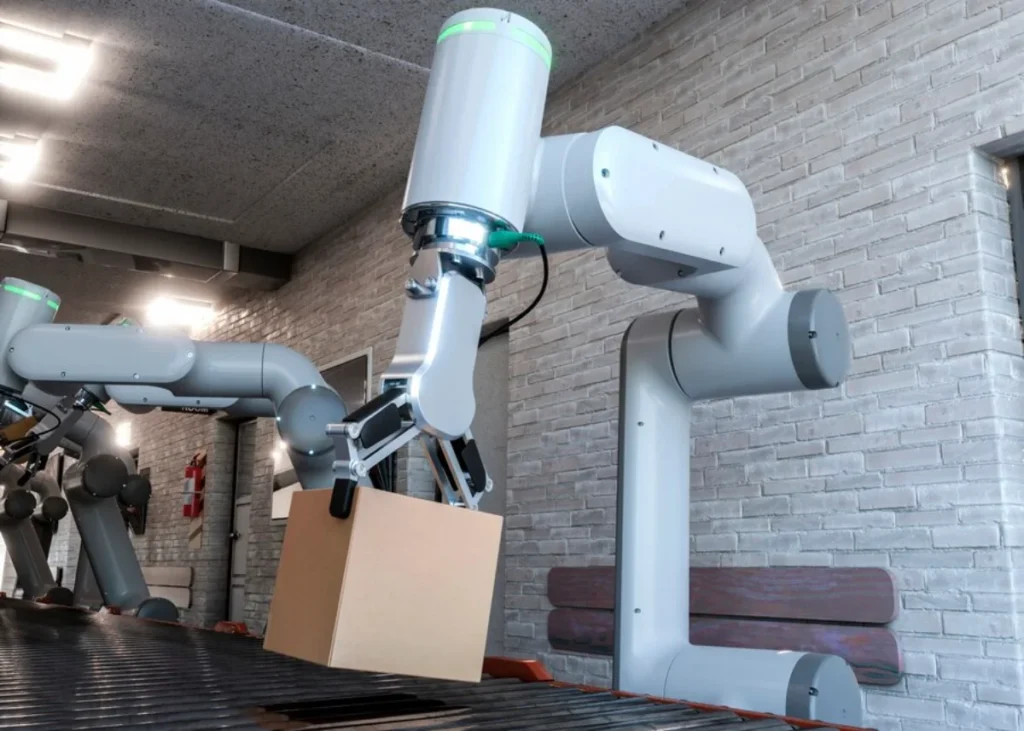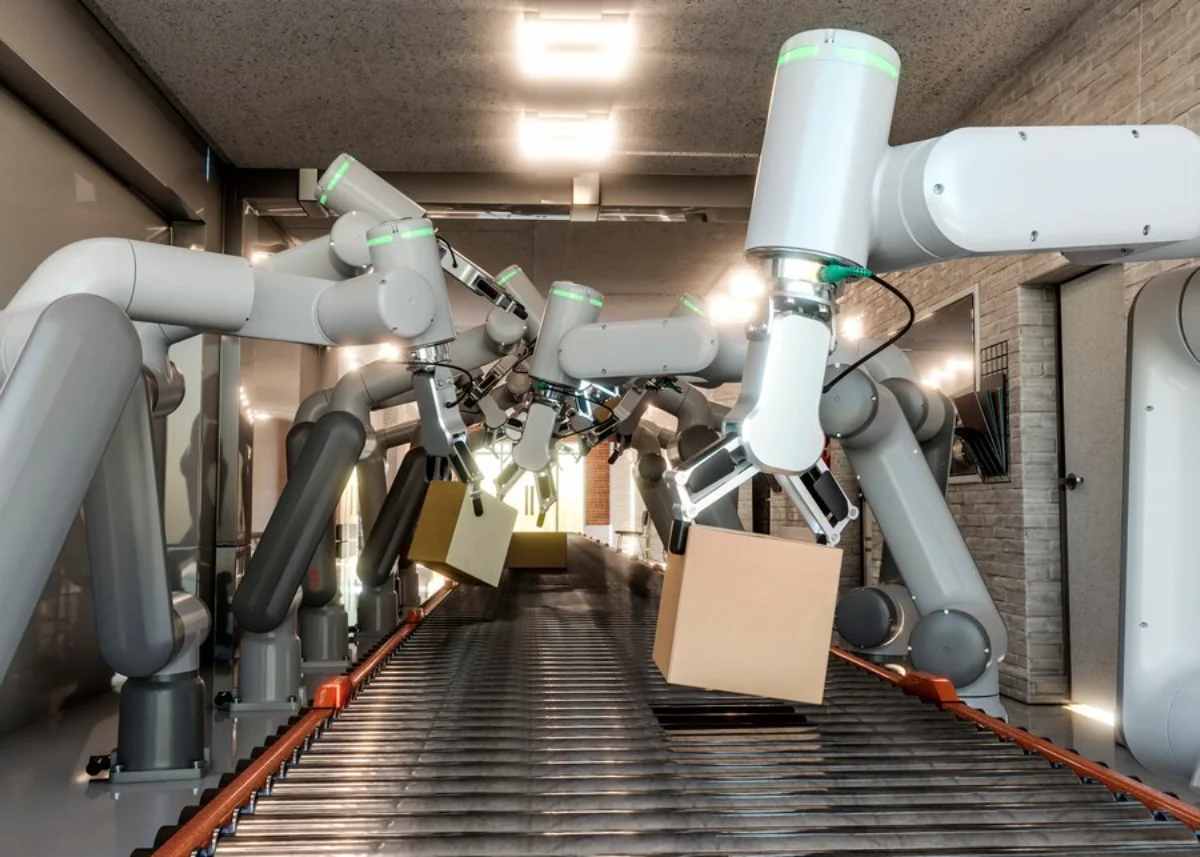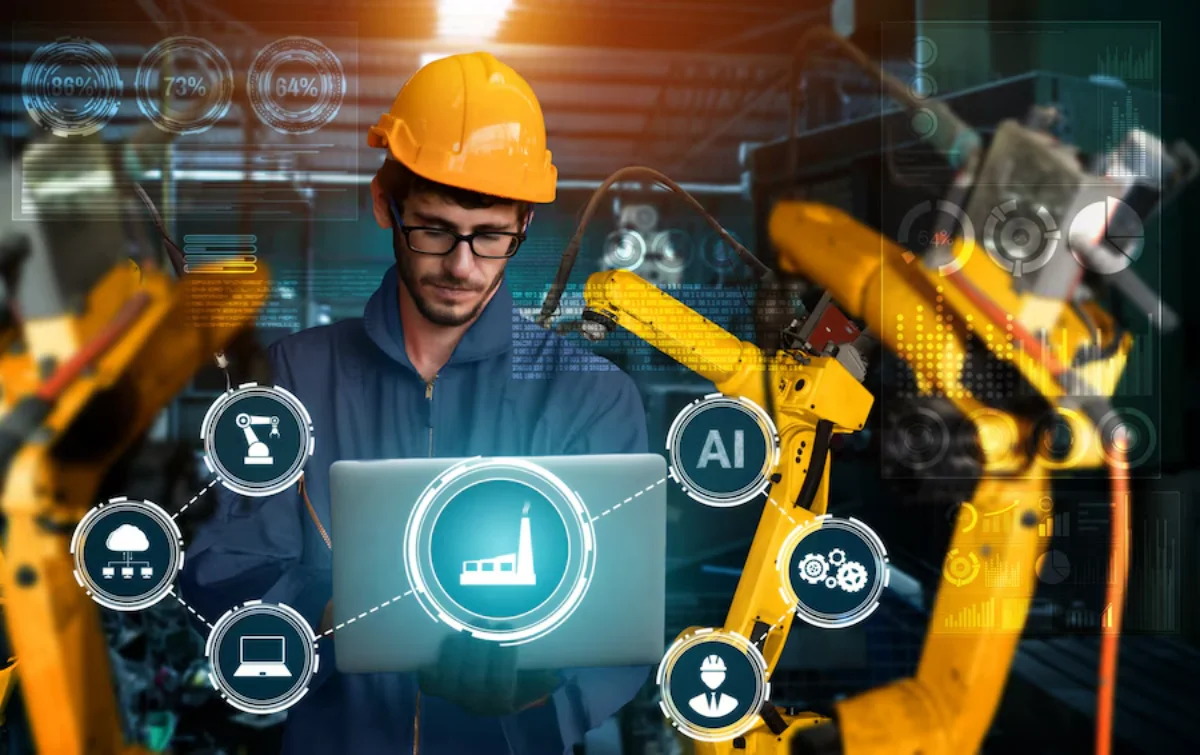The Technology Blog

The Impact of AI on Factory Automation
The manufacturing industry is undergoing a transformation driven by Artificial Intelligence (AI). Smart factories are replacing traditional production lines. They use AI-driven systems to boost efficiency, productivity, and precision. AI in manufacturing is changing industrial automation. It reduces the need for human involvement and boosts efficiency.
But how exactly is AI shaping factory automation? What are the benefits, challenges, and future trends of AI-powered smart factories? This article looks at how AI is changing industrial automation. It covers key innovations in AI for manufacturing. Also, it explains how businesses can use this technology to stay competitive.

The Evolution of Industrial Automation
1. Traditional Automation vs. AI-Powered Automation
Before AI, factory automation relied on pre-programmed machines that followed fixed instructions. While these systems improved efficiency, they lacked flexibility and adaptability. AI-driven machines, however, take automation to the next level by:
Learning and adapting to changes in production. Detecting defects and making real-time corrections. Predicting equipment failures to prevent breakdowns. Optimising energy use and reducing operational costs.
The move from traditional automation to AI-driven smart factories is boosting efficiency in manufacturing like never before.
2. The Rise of Smart Factories
A smart factory is a modern manufacturing site. Here, AI, IoT (Internet of Things), and automation team up. They create a production system that optimises itself. These factories rely on:
- AI-driven robots that automate assembly lines.
- Predictive maintenance systems that reduce machine downtime.
- Real-time data analytics to improve decision-making.
Siemens, Tesla, and Bosch are top companies in AI for manufacturing. They use advanced automation solutions in their factories.

Key Applications of AI in Manufacturing
1. AI-Powered Robotics and Cobots
AI-driven robotic arms and collaborative robots (cobots) are enhancing factory automation. Unlike traditional robots, cobots work alongside humans, assisting with tasks such as:
- Assembly line operations – AI robots handle repetitive tasks with precision.
- Welding and painting – Ensuring accuracy and quality control.
- Material handling – Sorting, picking, and packaging items efficiently.
BMW factories use AI cobots to help workers assemble car parts. This boosts efficiency and safety.
2. Predictive Maintenance and AI Analytics
Machine failures can cause significant production delays and losses. AI-powered predictive maintenance reduces downtime by:
Monitoring equipment health using IoT sensors. Detecting early warning signs of machine failures. Scheduling maintenance before breakdowns occur.
General Electric (GE) uses AI for predictive maintenance. This helps extend the lifespan of industrial machines and prevents unexpected failures.
3. AI in Quality Control and Defect Detection
AI-powered computer vision systems improve industrial automation by:
- Detecting defects in products with high accuracy.
- Analysing images and videos to identify irregularities.
- Reducing waste by minimising defective production.
Toyota uses AI for quality control. It finds tiny defects in car parts. This helps ensure top-notch production.
4. Supply Chain and Inventory Optimisation
AI in manufacturing enhances supply chain efficiency by:
- Predicting demand based on market trends.
- Automating inventory management to prevent overstocking or shortages.
- Optimising logistics and transportation routes to reduce costs.
Amazon’s smart warehouses use AI to speed up order fulfilment. This helps deliver items faster and more accurately.
5. Energy Efficiency and Sustainability
AI-powered smart factories use real-time energy monitoring to:
Reduce electricity consumption. Optimise heating, cooling, and lighting. Lower carbon emissions for sustainable production.
Siemens’ AI factories change power use based on current production needs. This cuts operational costs a lot.

Benefits of AI in Factory Automation
Increased Productivity
AI-driven automation boosts speed and efficiency. It helps factories produce more while using fewer resources.
Cost Reduction
AI saves businesses millions by optimising energy use, cutting waste, and preventing machine breakdowns.
Improved Product Quality
AI quality control finds defects more accurately, which improves product standards.
Enhanced Worker Safety
AI-driven cobots and automation systems reduce human exposure to dangerous factory conditions.
Greater Flexibility and Scalability
AI smart factories can change with the market. They adjust production when demand shifts.
Challenges of AI-driven Industrial Automation
While AI in manufacturing offers numerous benefits, it also presents challenges:
1. High Initial Costs
Setting up AI-powered automation systems requires significant investment in infrastructure, training, and maintenance.
2. Workforce Transition and Job Displacement
Automation is replacing certain manual jobs, leading to concerns about job losses. But it is also creating new jobs in AI system management, data analysis, and robotics programming.
3. Data Security Risks
AI-driven smart factories rely on large volumes of sensitive production data. Without proper cybersecurity measures, factories risk:
- Hacking attacks that disrupt operations.
- Data leaks that expose confidential manufacturing processes.
4. AI Bias and Ethical Concerns
AI systems can be biased. This happens when they are trained on incomplete datasets. As a result, quality assessments can be inaccurate, causing operational errors.
Future Trends in AI and Smart Factories
The future of AI in manufacturing is promising, with several emerging automation trends:
1. Fully Autonomous Factories
AI-driven self-learning production systems will require minimal human intervention, making manufacturing more efficient.
2. AI-Powered Digital Twins
Digital twins are virtual copies of factory operations. They help businesses simulate production processes. This way, companies can boost efficiency before making changes.
3. Edge AI in Manufacturing
AI devices at the factory’s edge will handle data locally. This cuts down on cloud reliance and speeds up decision-making.
4. AI and 5G-Enabled Smart Factories
5G networks will boost factory operations with real-time AI automation. This will improve connectivity and speed up response times.
The Future of AI in Manufacturing: A Smart Revolution
AI is redefining industrial automation, making factories smarter, faster, and more efficient. AI is changing manufacturing. It helps with predictive maintenance, quality control, robotics automation, and sustainable production. This shift is creating smart factories around the globe.
Even though there are challenges like high costs, workforce shifts, and data security risks, the advantages of AI automation far surpass the downsides. Businesses that invest in AI-driven machines today will gain a competitive edge in the future of manufacturing.
AI-powered smart factories will be key as automation trends grow. They will shape the future of industrial production. The future of AI in manufacturing is here—and it’s transforming the way factories operate.









